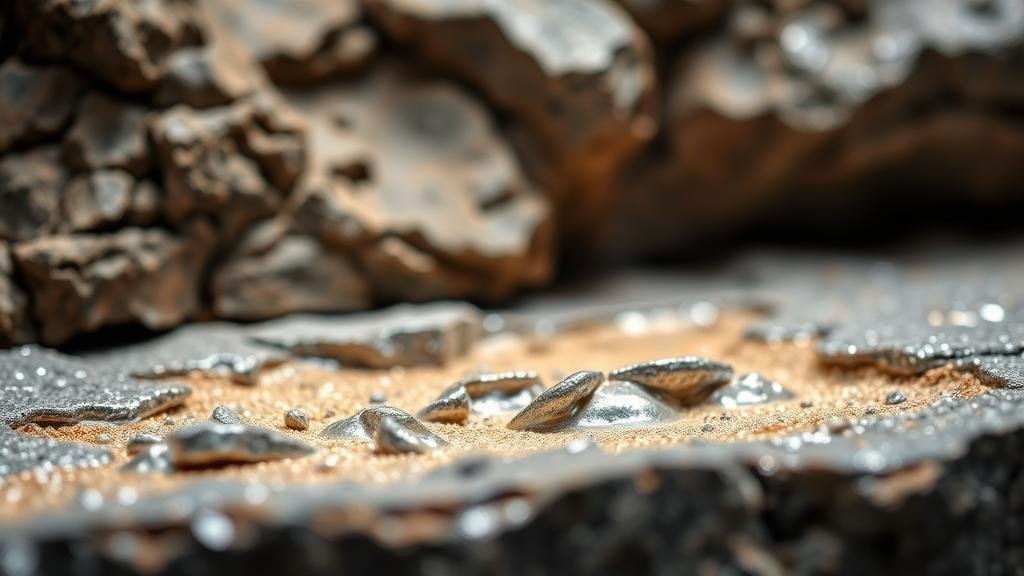Secret Techniques for Detecting Hidden Silver Deposits in Limestone Layers
Secret Techniques for Detecting Hidden Silver Deposits in Limestone Layers
The pursuit of silver deposits in limestone layers is a fascinating endeavor that combines geology with mineral exploration. While limestone itself is not typically associated with silver, geological processes can lead to the entrapment of silver deposits within this sedimentary rock. Understanding the techniques to detect these hidden deposits is crucial for both amateur prospectors and professional miners alike.
The Geological Context of Silver in Limestone
Silver is often found in association with sulfide minerals, which may form in limestone through hydrothermal processes. Over time, silver ore can accumulate in cavities within limestone formations or be replaced by surrounding limestone material. An understanding of the geological context is essential when exploring for hidden silver deposits.
- Hydrothermal Activity: Many silver deposits are formed through hydrothermal circulation, where hot, mineral-rich fluids move through fractures in the rock.
- Replacement Processes: Silver can replace limestone mineral components during chemical reactions, creating disseminated ores.
Techniques for Detection
Detecting hidden silver deposits in limestone requires a combination of traditional mining techniques and modern technology. Below are several methods, each utilized by geologists and prospectors in varying capacities.
1. Geological Surveying
A comprehensive geological survey is often the first step in detecting potential silver deposits. Geologists analyze surface formations, rock types, and mineral signs.
- Outcrop Examination: Observing natural rock exposures can reveal mineralization patterns.
- Soil Sampling: Taking soil samples around limestone formations can help identify areas with higher concentrations of silver.
2. Geophysical Methods
Geophysical methods use advanced technologies to detect anomalies in the Earth’s magnetic or electrical fields which may indicate mineral deposits.
- Magnetic Resonance Imaging: This method measures magnetic fields to identify variations associated with metallic deposits.
- Resistivity Surveys: This technique assesses how easily electricity flows through the ground. Silver ores are less conductive compared to surrounding limestone, making them detectable.
3. Geochemical Analysis
Geochemical assays involve analyzing the chemical composition of rock and soil samples to determine the presence of silver. This method can pinpoint areas where further exploration should be concentrated.
- Inductively Coupled Plasma Mass Spectrometry (ICP-MS): This technique provides precise measurements of silver concentrations in samples, allowing for detailed assessments.
- X-ray Fluorescence (XRF): XRF can quickly analyze elemental composition in field settings.
Case Studies and Real-World Applications
Understanding these methods can be further illustrated through numerous case studies where geologists successfully detected silver deposits in limestone:
- The Comstock Lode (Nevada, USA): One of the most prolific silver mining districts, the nearby limestone formations played a crucial role in the formation of rich silver deposits.
- San Cristobal Mine (Bolivia): Utilizing geological surveys and geochemical analysis, mining operations successfully revealed hidden silver deposits within limestone formations.
Addressing Potential Concerns
Prospectors should be aware of various challenges when searching for hidden silver deposits:
- Environmental Regulations: Before exploration, it is essential to consult and comply with local environmental guidelines.
- Resource Accessibility: Consideration of access to remote limestone areas is crucial for practical exploration efforts.
Actionable Takeaways
Successfully detecting hidden silver deposits in limestone layers requires a blend of traditional knowledge and modern technology. Here are key takeaways:
- Conduct thorough geological surveys to assess the area.
- Use geophysical and geochemical methods for a comprehensive analysis.
- Learn from case studies of successful silver mining to inform your own exploration efforts.
- Stay informed about environmental regulations and practical accessibility when planning your exploration.
By employing these secret techniques, both amateur and professional prospectors can maximize their chances of discovering valuable silver deposits hidden within limestone layers.



